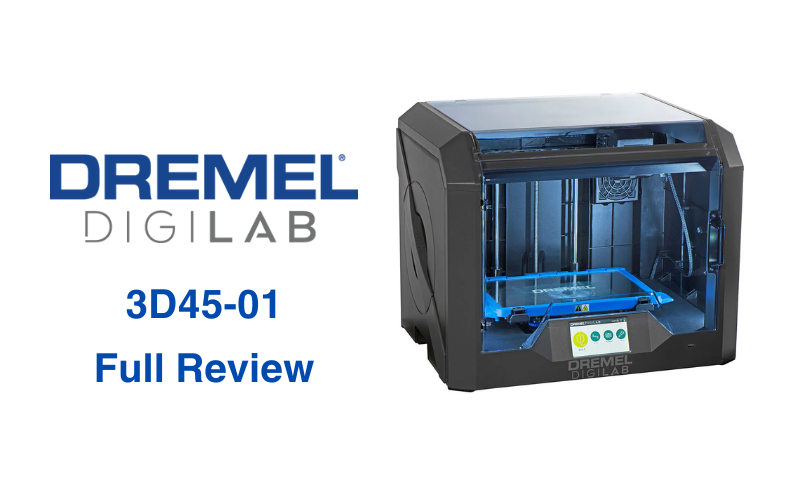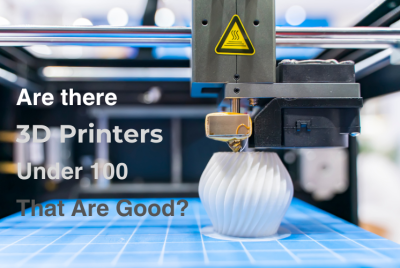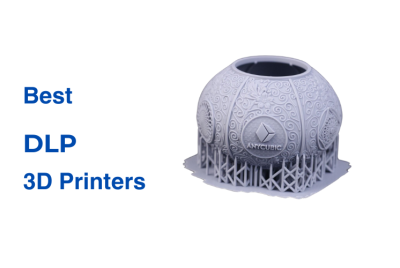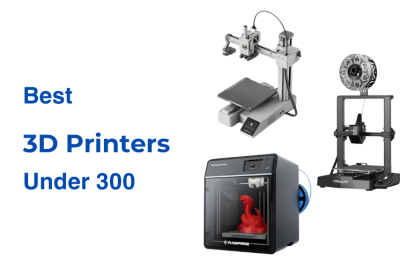Dremel DigiLab 3D45-01 Full Review
Dremel is a company known for their innovative and high-quality tools. They have a long history that dates back to 1932 when Albert J. Dremel founded the company. Initially focused on creating rotary tools for various industries, Dremel ventured into the 3D printing industry in recent years. This allowed them to cater to the growing demand for 3D printing in educational settings, hobbyist workshops, and professional environments. Among the 3D printers is the 3D45-01, designed for educators and professionals. It’s capable of printing advanced materials such as Nylon, polycarbonate, and EcoABS. In this Dremel DigiLab 3D45-01 full review, we’ll take a look at the features and capabilities of this printer as one of the best nylon 3D printers in the market.
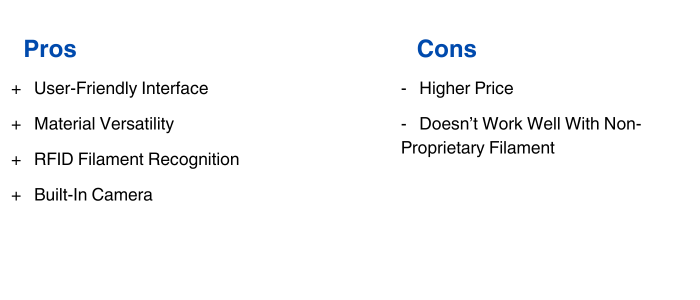
Design and Build Quality
The 3D45-01 comes with a sturdy, fully enclosed frame that protects your prints and creates a stable environment, which is really important when working with more advanced materials like Nylon and polycarbonate. The transparent door and lid make it easy to keep an eye on your prints, which is great for classrooms or workshops where people need to watch the process closely. Not only that, but it can also be opened even while printing.
As for the build, the 3D45-01 feels solid and well-made, reflecting Dremel’s long-standing reputation for quality. The semi-automatic leveling system takes the hassle out of the usual bed leveling process. The 4.5-inch color touchscreen is easy to navigate, with clear instructions and feedback as you go. With its heated bed and removable build platform, the printer is versatile enough to handle a variety of projects and materials.
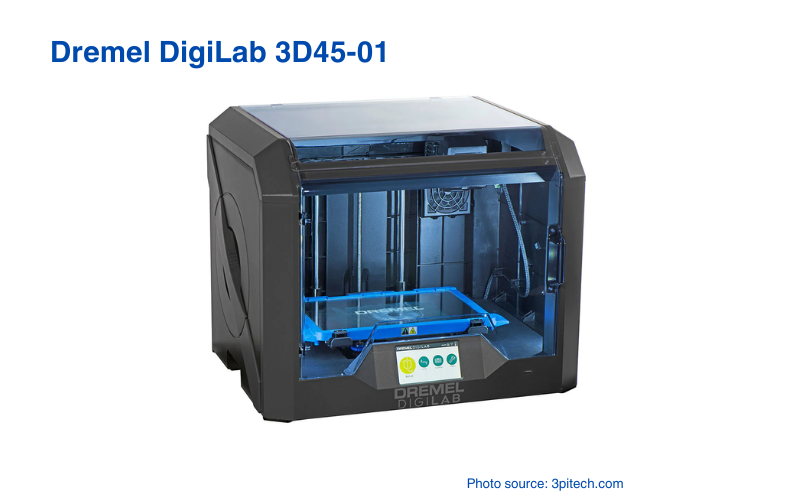
Key Features and Specifications
| Key Features | Specifications |
|---|---|
| Fully Enclosed Design | Build Volume: 10 x 6 x 6.7 inches |
| High-Temperature Extruder | Layer Resolution: 50-340 micron |
| Semi-Automatic Bed Leveling | Nozzle Diameter: 0.4 mm (standard) |
| Tempered Glass Build Plate | Max Nozzle Temperature: 280°C |
| RFID Filament Recognition | Filament Compatibility: PLA, PETG, Nylon, Eco-ABS, TPU |
| Built-In 720p Camera for Remote Monitoring | Connectivity: WiFi, Ethernet, USB |
| Heated Bed | Extruder: All Metal-Hot End Direct Drive |
| Print Speed: Up to 150 mm/s (recommended 60-100 mm/s) | |
| Display: 4.5-inch Color IPS Touchscreen |
The Dremel DigiLab 3D45-01 is packed with features that make it one of the best nylon 3D printers in the market. The high-temperature extruder can reach up to 280°C, necessary for printing with advanced materials. Although it has this capability, this printer is known to work well with its proprietary materials, and not so well with others. The semi-automatic bed leveling system simplifies the setup process. The tempered glass build plate makes adhesion and removal of finished parts easy. One of the standout features is the RFID filament recognition system, which automatically adjusts the printer’s settings based on the type of filament you’re using. This, combined with the built-in 720p camera, makes it easy to monitor and manage your prints remotely. The 4.5-inch color IPS touchscreen makes the interface user-friendly, ensuring that navigation through menus and settings is straightforward.
Comparison
3D45-01 vs 3D20
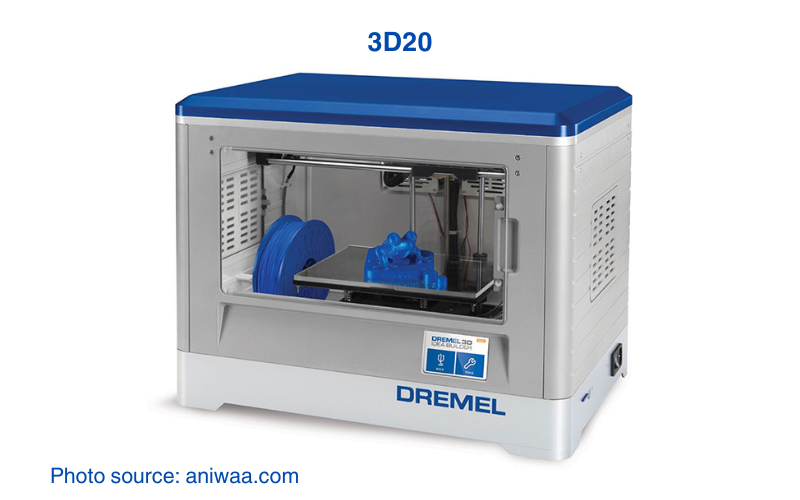
The Dremel DigiLab 3D20 is a more compact and beginner-friendly option within the Dremel 3D printer lineup. Here are some key differences between the 3D20 and the 3D45-01:
Build Volume: The 3D45-01 offers a larger build volume of 10 x 6 x 6.7 inches compared to the 3D20’s 9 x 5.9 x 5.5 inches, making it better suited for larger or more complex projects.
Material Compatibility: While the 3D45-01 can handle advanced materials like Nylon and polycarbonate, the 3D20 is limited to more basic filaments like PLA.
Features: The 3D45-01 includes advanced features such as a high-temperature extruder, semi-automatic bed leveling, and RFID filament recognition. These are not available on the 3D20.
Price: The 3D20 is more affordable, ideal for beginners or those looking for a simpler, entry-level machine. However, the 3D45-01’s advanced capabilities and larger build volume justify its higher price for professionals.
3D45-01 vs 3D40 Flex

The Dremel DigiLab 3D40 Flex is a mid-range option that strikes a balance between simplicity and functionality. Here’s how it compares to the 3D45-01:
Build Volume: Both the 3D45-01 and the 3D40 Flex have a similar build volume of 10 x 6 x 6.7 inches. Both are suitable for a wide range of projects.
Material Compatibility: The 3D45-01 can print with more advanced materials like Nylon and polycarbonate, thanks to its high-temperature extruder. While the 3D40 Flex is better suited for more common materials.
Features: The 3D40 Flex includes a semi-automatic bed leveling system and a removable flex build plate. However, it lacks the RFID filament recognition and the high-temperature capabilities of the 3D45-01.
Price: The 3D40 Flex is priced between the 3D20 and the 3D45-01, giving access to more features than the 3D20 but at a lower cost than the 3D45-01. It is a good option for users who want a bit more functionality without the need for advanced material compatibility.
Real World Applications
Education and Classroom Use
The Dremel DigiLab 3D45-01 offers an educational ecosystem especially designed for classroom learners. They have a curriculum for students, at every academic level. Their collection of lesson plans, materials, software and 3D printer is packaged for teaching the technology. This includes a workflow that works well in the classroom setting. Its ease of use, combined with safety features like the fully enclosed design and RFID filament recognition, makes it a reliable choice for classrooms. The ability to print with a variety of materials gives learners the opportunity to explore a wide range of projects. It can be simple models to more complex engineering prototypes. The intuitive touchscreen interface and semi-automatic bed leveling further reduce the learning curve. This enables learners to become proficient with the technology.
Prototyping and Product Development
For professionals in design and engineering fields, the 3D45-01 makes it more efficient for rapid prototyping and product development. The high-temperature extruder allows for the use of durable materials like polycarbonate and Nylon. These are essential for creating functional prototypes that can withstand rigorous testing. The printer’s precision ensures that even the most detailed designs are accurately produced. Additionally, the enclosed build chamber helps maintain consistent print quality. This is crucial when working on prototypes that require high dimensional accuracy.
Makerspaces and Workshops
In makerspaces and workshops, the 3D45-01 is a versatile tool for creators and innovators. Its ability to print with a range of materials makes it a great fit for crafting custom tools, parts, and custom pieces. The built-in camera and WiFi connectivity allow users to monitor prints remotely. This feature is particularly useful in busy environments where multiple projects might be running simultaneously.
Conclusion
Dremel Digilab designed the 3D45-01 for educators and experienced users who are exploring more advanced materials. Priced at around $1,999, this 3D printer is not exactly aimed at entry level 3D printing. With its straightforward operation and features like a high-temperature extruder, RFID filament recognition, and semi-automatic bed leveling, it serves as a viable choice for beginners but is better suited for those with more experience or who are exploring printing with different materials. With its solid construction, easy-to-navigate design, and reliable output, the Dremel DigiLab 3D45-01 is a worthwhile addition to any 3D printing setup. Whether in an educational, professional, or creative setting, this printer offers the necessary features to turn ideas into reality, consistently and effectively.

